Onkyo D-145 Handleiding
Onkyo
Hifi systeem
D-145
Bekijk gratis de handleiding van Onkyo D-145 (4 pagina’s), behorend tot de categorie Hifi systeem. Deze gids werd als nuttig beoordeeld door 226 mensen en kreeg gemiddeld 4.7 sterren uit 113.5 reviews. Heb je een vraag over Onkyo D-145 of wil je andere gebruikers van dit product iets vragen? Stel een vraag
Pagina 1/4

Speaker System
D-145
Instruction Manual
Thank you for purchasing an Onkyo Speaker System. Please read this manual
thoroughly before using it. Following the instructions in this manual will enable
you to obtain optimum performance and listening enjoyment from your new
Speaker System. Please retain this manual for future reference.
ᅝ㺙ݠ
ᅝ㺙ݠ
ᅝ㺙ݠ
ᅝ㺙ݠᅝ㺙ݠ
ᛳ䇶ᙼ䌁фϔ༫᮹ᴀᅝḹ⠠ᡀໄ఼㋏㒳DŽՓ⫼ᴀᡀໄ఼㋏㒳Пࠡ
ˈ䇋䅸
ⳳ䯙䇏ᴀݠDŽ䙉ᅜᴀݠЁⱘᣛ⼎ˈᙼⱘᮄᡀໄ఼㋏㒳ᇚ᳔
᳝
Շᗻ㛑ˈ
ᙼᇚӮѿফࠄໄ䷇ⱘ㕢DŽ䇋
ֱ
⬭ᴀݠˈҹᇚᴹᶹ䯙DŽ

2
Right speake
r
Left speake
r
Positive (+)
side is indicated
by a red line
Speaker cable
Getting to Know the Speakers
The two speakers are identical, so it doesn’t matter which one you use
on the left or right.
Using Close to a TV or Computer
TVs and computer monitors are magnetically sensitive devices and as
such are likely to suffer from discoloration or picture distortion when
conventional speakers are placed nearby. Note that discoloration can
also be caused by a magnet or demagnetizing tool that's too close to
your TV or monitor.
Removing the Grills Using the Cork Spacers
Connection the Speakers
Before connecting the speakers, disconnect your amplifiers power
cord from the wall outlet and set its volume control to minimum.
The speaker’s rated impedance is 4 . Make sure you connect an
amplifier that is compatible with a 4 impedance.
Use the supplied speaker cables to connect the speakers to your
amplifier as shown.
1.Peel the
insulation off
the ends of
the speaker
cable and
twist the
core wires.
2.Loosen the
terminal screw
and insert the
speaker cable
into the hole
(until the core
wires are
inserted fully).
3.Fasten the
terminal
screw.
The type of speaker terminals used on the amplifier and their position
depends on the model. Refer to the amplifier’s instruction manual for
details on connecting speakers to the amplifier.
Make sure the speaker’s positive (+) termi-
nals are connected to the amplifier’s positive
(+) terminals, and the speaker’s negative (–)
terminals are connected to the amplifier’s
negative (–) terminals.
Make sure that the positive (+) and negative
(–) wires are not touching each other. If they
are, a short circuit may occur, damaging your
amplifier.
Care
To maintain the appearance of the speakers, you should periodically
wipe them with a soft, dry cloth. Do not use abrasive cloths, thinners,
alcohol, or other solvents that may damage the finish.
Before Using Your New Speakers
The speaker cabinets are made out of wood and are therefore
sensitive to extreme temperatures and humidity. Do not use
them in locations subject to direct sunlight or in humid
places, such as near an air conditioner, humidifier, bathroom,
or kitchen.
Place the speakers on sturdy, flat surfaces. Putting them on
uneven or unstable surfaces where they may fall and cause
damage will affect the sound quality.
Do not keep water or other liquids close to the speakers. If a
liquid is spilled over them, the woofer and tweeter inside may
be damaged.
Do not handle the speakers with wet or damp hands.
Precautions
In catalogs and on packaging, the letter at the end of the product
name indicates the color. Specifications and operation are the same
regardless of the color.
The speakers can handle the specified input power when used for
normal music reproduction. If they’re fed any of the following sig-
nals, even if the input power is within the specified rating, exces-
sive current may flow in the speaker coils, causing burning or wire
breakage:
1. Interstation noise from an untuned FM radio.
2. Audio from a cassette that’s being fast-forwarded.
3. High-pitched sounds generated by an oscillator, electronic musi-
cal instrument, and so on.
4. Amplifier oscillation
5. Special test tones from audio test CDs and so on.
6. Thumps and clicks caused by connecting or disconnecting audio
cables (always turn off your amplifier before connecting or dis-
connecting cables).
7. Microphone feedback
The speakers contain powerful magnets. Do not put metal items,
such as screwdrivers, close to the speakers, as they damage to the
tweeter diaphragm.
Specification
Type: 2-way bass reflex
Impedance: 4
Maximum input power: 80 W
Output sound pressure level: 85 dB/W/m
Frequency response: 55 Hz to 35 kHz
Crossover frequency: 3 kHz
Cabinet capacity: 7.5
Dimensions (W × H × D): 170 × 283 × 230 mm
(incl. grille and projection)
Weight: 3.7 kg
Speakers Woofer: 12 cm OMF cone type
Tweeter: 2.5 cm Soft Dome type
Terminal: Screw-type speaker terminal
Grille: Detachable
Accessories: 1.8 meter speaker cable × 2
Cork spacer × 8
* Specifications and features are subject to change without notice.
Remove Replace
Grille attachment
catcher
Grille
Tweeter
Cabinet Woofe
r
Bottom
Cork spacer

3
ᢚ
ϟ
ԡ
ে
ᡀໄ
఼
Ꮊᡀໄ
఼
ℷᵕ˄˅ջ
⫼㑶㒓ᣛ⼎
ᡀໄ
఼
⬉㓚
ᓔྟ䅸䆚ᡀ
ᓔྟ䅸䆚ᡀ
ᓔྟ䅸䆚ᡀ
ᓔྟ䅸䆚ᡀᓔྟ䅸䆚ᡀໄ఼
ໄ఼
ໄ఼
ໄ఼ໄ఼
ϸϾᡀໄ఼ⳌৠˈℸˈᙼՓ⫼ᯊᎺেϸ䖍ᬒાϔϾഛ
ৃDŽ
⬉㾚⬉㛥
⬉㾚⬉㛥
⬉㾚⬉㛥
⬉㾚⬉㛥⬉㾚⬉㛥䰘䖥Փ⫼ᯊⱘ
䰘䖥Փ⫼ᯊⱘ
䰘䖥Փ⫼ᯊⱘ
䰘䖥Փ⫼ᯊⱘ䰘䖥Փ⫼ᯊⱘ⊼ᛣџ乍
⊼ᛣџ乍
⊼ᛣџ乍
⊼ᛣџ乍⊼ᛣџ乍
⬉㾚⬉㛥ᰒ⼎఼ᰃ⺕ᬣᛳ䆒ˈℸᔧᡞӴ㒳ᡀໄ఼ᬒ㕂
݊䰘䖥ᯊˈৃ㛑Ӯᓩ䍋ব㡆ڣ༅ⳳDŽ⊼ᛣˈᔧ⺕䪕এ
⺕Ꮉ⾏⬉㾚⬉㛥ᰒ⼎఼䖛䖥ᯊˈгӮᓩ䍋ব㡆DŽ
ᢚ
ᢚ
ᢚ
ᢚ
ᢚϟḐ
ᷙ
ϟḐ
ᷙ
ϟḐ
ᷙ
ϟḐ
ᷙ
ϟḐ
ᷙ
Փ
Փ
Փ
Փ
Փ⫼䕃ൿ⠛
⫼䕃ൿ⠛
⫼䕃ൿ⠛
⫼䕃ൿ⠛⫼䕃ൿ⠛
䖲ᡀໄ఼
䖲ᡀໄ఼
䖲ᡀໄ఼
䖲ᡀໄ఼䖲ᡀໄ఼
䖲ᡀໄ఼Пࠡ
ˈߛᮁᠽ䷇఼⬉⑤㒓Ϣຕ㺙⬉⑤ᦦᑻⱘ
䖲ˈᡞᠽ䷇఼䷇䞣䇗㡖఼䇗㟇᳔ᇣDŽ
䆹ᡀໄ఼ⱘ乱ᅮ䰏ᡫЎ ¡ˈ䇋⹂ֱ᠔䖲ⱘᠽ䷇఼Ϣ
¡䰏ᡫⳌᆍDŽ
Փ⫼᠔ᦤկⱘᡀໄ఼⬉㓚䖲ᡀໄ఼Ϣᠽ䷇఼ˈབϟ᠔
⼎DŽ
1.Peel the
insulation off
the ends of
the speaker
cable and
twist the
core wires.
2.Loosen the
terminal screw
and insert the
speaker cable
into the hole
(until the core
wires are
inserted fully).
3.Fasten the
terminal
screw.
ᠽ䷇఼᠔Փ⫼ⱘᡀໄ఼ッᄤ㉏ൟঞ݊ԡ㕂পއѢᴎൟDŽ݇Ѣ
ᡀໄ఼Ϣᠽ䷇఼䖲ⱘ㒚㡖ˈ䇋ᶹ䯙ᠽ䷇఼ⱘᅝ㺙ݠDŽ
ֱ
⹂ᡀໄ఼ⱘℷᵕ˄ˇ˅ッᄤϢᠽ䷇఼
ⱘℷᵕ˄ˇ˅ッᄤⳌ䖲ˈᡀໄ఼ⱘ䋳
ᵕ˄ˉ˅ッᄤϢᠽ䷇఼ⱘ䋳ᵕ˄ˉ˅ッ
ᄤⳌ䖲DŽ
䇋⹂
ֱ
ℷᵕ˄ˇ˅Ϣ䋳ᵕ˄ˉ˅ᇐ㒓ϡ
ⳌѦ㾺ˈ৺߭ৃ㛑থ⫳ⷁ䏃ˈᤳണᠽ
䷇఼DŽ
ֱݏ
ֱݏ
ֱݏ
ֱݏֱݏ
Ўњ㓈ᣕᡀໄ఼ⱘ㾖ˈᑨᅮᳳ⫼ᑆ➹ⱘ䕃Ꮧ
᪺
ᣁᅗӀDŽϡ
㽕Փ⫼ⷖᏗǃ⿔䞞ࠖǃ䜦㊒ৃ㛑ᤳണ䴶ሖⱘ݊ᅗ⒊ࠖDŽ
ࠡ
⫼乏ⶹ
ࠡ
⫼乏ⶹ
ࠡ
⫼乏ⶹ
ࠡ
⫼乏ⶹ
ࠡ
⫼乏ⶹ
䆹ᡀໄ఼ㆅЎࠊˈᇍ催⏽╂⦃๗ᵕ݊ᬣᛳDŽ
ℸˈϡ㽕ᡞᡀໄ఼ㆅᬒ㕂䰇ܝⳈᇘⱘԡ㕂╂
ⱘഎ᠔ˈ՟བ˖ぎ䇗ǃࡴ఼ǃ⍈ᅸॼ᠓䰘䖥DŽ
ᡞᡀໄ఼ᬒ㕂മ㗠ᑇ〇ⱘഄᮍˈ৺߭ᯧᇐ㟈݊
ᥝ㨑ǃᤳണˈҢ㗠ᕅડ䷇䋼DŽ
ϡ㽕ᡀໄ఼䰘䖥ᄬ⬭∈݊ᅗ⎆ԧDŽབᵰ⎆ԧ
ࠄᡀໄ఼ㆅϞˈ߭Ӯᤳണ݊ݙ䚼ⱘ催乥ᡀໄ఼ঞԢ
乥ᡀໄ఼DŽ
⽕⫼㾺ᩌᡀໄ఼DŽ
⊼ᛣџ乍
⊼ᛣџ乍
⊼ᛣџ乍
⊼ᛣџ乍⊼ᛣџ乍
ѻકⳂᔩЁࣙ㺙Ϟˈѻકৡ⿄㒧ሒᄫ↡㸼⼎ѻક买
㡆DŽ买㡆ϡৠϡᕅડѻક㾘Ḑঞ᪡DŽ
ᔧᡀໄ఼㹿⫼Ѣℷᐌⱘ䷇Ф䞡ᬒᯊˈ㛑໘⧚乱ᅮⱘ䕧
ܹࡳ⥛DŽབᵰᡀໄ఼作㒭ϟ߫ӏԩֵোˈ䙷МेՓ䕧
ܹࡳ⥛㾘ᅮⱘ乱ᅮؐ㣗ೈݙˈгৃ㛑Ӯ
᳝
䖛⬉⌕⌕
ܹᡀໄ఼㒓ݙˈ䗴៤➗⚻ᮁ㒓DŽ
˅䇗䇤ⱘ䇗乥ᬊ䷇ᴎথߎⱘৄ䯈ాໄDŽ
˅ᖿ䖯Ⲧᓣ⺕ᏺথߎⱘໄ䷇DŽ
˅⬅ᤃ㤵఼ǃ⬉ᄤФ఼ㄝথߎⱘ催ໄDŽ
˅ᠽ䷇఼ᤃ㤵DŽ
˅⬅䷇乥⌟䆩 &' ㄝথߎⱘ⡍⅞⌟䆩䷇DŽ
˅⬅䖲ᮁᓔ䷇乥⬉㓚ᓩ䍋ⱘ⸄ໄⓈㄨໄ
˄ᘏᰃ㽕䖲ᮁᓔ⬉㓚Пࠡ݇䯁ᠽ䷇఼˅DŽ
˅䆱ㄦড作DŽ
䆹ᡀໄ఼ݙᔎ⺕䪕ˈϡ㽕ᡞ䞥ሲ⠽ક˄՟བ㶎ϱߔ˅
ᬒᡀໄ఼䰘䖥ˈҹܡᤳӸ催乥ᡀໄ఼ᤃࡼ㝰DŽ
㾘Ḑ
㾘Ḑ
㾘Ḑ
㾘Ḑ㾘Ḑ
ൟো ঠ䏃Ԣ䷇ডᇘᓣ
䰏ᡫ
᳔䕧ܹࡳ⥛ :
䕧ߎໄय़㑻߿ G%:P
ડᑨ乥⥛ +]ࠄN+]
ߚ乥乥⥛ N+]
ㆅᆍ䞣
ሎᇌ䭓hᆑh催 hhPP
˄ࣙᣀḐ
ᷙ
さߎ䚼ߚ˅
䞡䞣 NJ
ᡀໄ఼ Ԣ乥ᡀໄ఼ ६㉇ 20) 䫹ᔶ
催乥ᡀໄ఼ ६㉇䕃乊ᔶ
㒓
᷅
㶎ᮟᓣᡀໄ఼㒓
᷅
Ḑ
ᷙ
ৃᢚौ
䰘ӊ ㉇ᡀໄ఼⬉㓚h
䕃ൿ⠛h
㾘ḐϢࡳ㛑ৃ㛑থ⫳ᬍˈᘩϡ㸠䗮ⶹDŽ
催乥ᡀໄ఼
Ḑ
ᷙ
䖲⟾
Ḑ
ᷙ
ㆅԧ
ᑩ䚼
䕃ൿ⠛
࠹䰸ᡀໄ఼
⬉㓚ッ༈ⱘ
㒱㓬Ⲃˈ
ᡞ㢃㒓ᢻ៤
ϔᴳDŽ
ᵒᓔ㒓
᷅
㶎ϱˈᡞᡀໄ
఼⬉㓚ᦦܹ
ᄨݙ˄Ⳉࠄ㢃
㒓㹿ᅠܼᦦ
ܹ
˅DŽ
ᢻ㋻
㒓
᷅
㶎
ϱDŽ
Ԣ乥ᡀໄ఼
Product specificaties
| Merk: | Onkyo |
| Categorie: | Hifi systeem |
| Model: | D-145 |
| Kleur van het product: | Zwart |
| Gewicht: | 3200 g |
| Breedte: | 170 mm |
| Diepte: | 230 mm |
| Hoogte: | 283 mm |
| Materiaal behuizing: | MDF |
| Connectiviteitstechnologie: | Bedraad |
| Gemiddeld vermogen: | 80 W |
| Aanbevolen gebruik: | Universeel |
| Impedantie: | 4 Ohm |
| Audio-uitgangskanalen: | 2.0 kanalen |
| Speaker plaatsing: | Tafelblad/Boekenplank |
| Aantal drivers: | 2 |
| Woofer: | Ja |
| Frequentiebereik: | 55 - 35000 Hz |
| Gevoeligheid: | 85 dB |
| Versterker: | Nee |
| Diameter woofer: | 120 mm |
| Diameter hogetonenluidspreker: | 25 mm |
| Tweeter: | Ja |
| Crossover frequentie: | 3000 Hz |
Heb je hulp nodig?
Als je hulp nodig hebt met Onkyo D-145 stel dan hieronder een vraag en andere gebruikers zullen je antwoorden
Handleiding Hifi systeem Onkyo

9 Juni 2023

17 Mei 2023

9 Mei 2023

3 Mei 2023

2 Mei 2023

25 April 2023

23 April 2023

16 April 2023

10 April 2023

14 Maart 2023
Handleiding Hifi systeem
- Crystal Video
- Orbitsound
- Switchcraft
- Sagem
- AmpliVox
- Musical Fidelity
- RCF
- Pioneer
- MIPRO
- Crown
- Focusrite
- Samsung
- TV One
- Fiio
- Victrola
Nieuwste handleidingen voor Hifi systeem
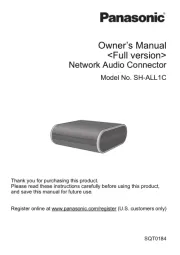
30 Juli 2025

30 Juli 2025
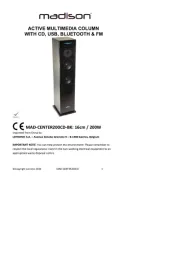
29 Juli 2025
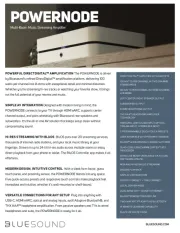
29 Juli 2025

29 Juli 2025
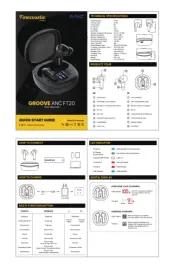
28 Juli 2025
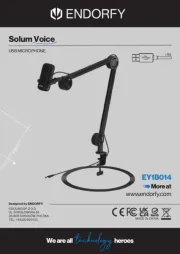
28 Juli 2025
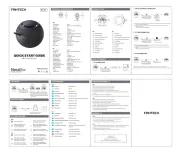
21 Juli 2025
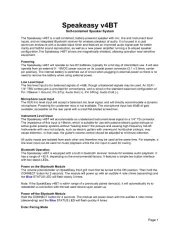
16 Juli 2025

15 Juli 2025